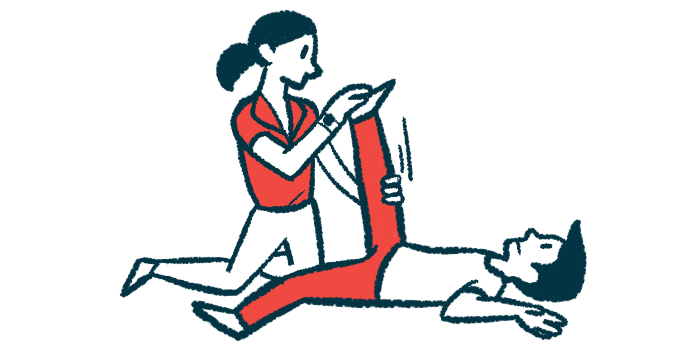At-home physical therapy program strengthens patients’ motor skills
Tailored and remotely supervised exercises that work into daily routines

Girls and women with Rett syndrome who participated in a three-month, at-home physical therapy program with occasional remote supervision met or exceeded most therapy goals and gained in motor abilities, a study reports.
“The proposed activity programs … improved gross and fine motor skills, and enhanced the daily physical activity level of girls and women with RTT [Rett] across a wide range of ages and severity levels,” the researchers wrote.
The study, “Individualized Remotely Supervised Motor Activity Programs Promote Rehabilitation Goal Achievement, Motor Functioning, and Physical Activity of People with Rett Syndrome—A Single-Cohort Study,” was published in the International Journal of Environmental Research and Public Health.
One total hour of motion exercises, done five days a week
People with Rett syndrome face ubiquitous challenges with motor function. Physical therapy can help to improve function, and for the best outcomes, therapy exercises should be continually practiced at home, not just at the clinic. In the wake of pandemic-related lockdowns, research interest is growing in programs that can facilitate therapy in a home setting.
A team of scientists in Italy and Israel conducted a trial to evaluate a personalized, remote-supervised physical therapy program for Rett syndrome patients.
The study enrolled 40 girls and women with Rett (mean age, 15.7) and their families, which the researchers noted makes it “the largest sample ever recruited in research regarding the motor treatment of individuals with RTT.”
At an initial visit, participants met with a therapist to discuss therapy goals. Three months later, they met again and were instructed in a personalized set of therapeutic exercises that could be done at the home.
Exercises focused on four areas — motor function, hand function, range of motion, and physical fitness — and were to be performed for one hour, with time broken up as needed, five days a week.
“The programs aimed to achieve the identified therapeutic objectives through easily implemented physical activities performed within the girl’s daily life,” the researchers wrote. They noted that specific programs varied widely, depending on the needs of the individual.
“The therapeutic intervention should be family-centered and constructed in strict cooperation with the person’s family to focus on significant goals and adequate support, enhancing adherence to the intervention,” the team wrote.
Participants were instructed to perform the at-home program for three months, and every other week they received guidance from a therapist through a one-hour video conference.
Participants then underwent a three-month washout period, in which they did not perform program exercises. Both before and after the intervention, patients underwent several standardized assessments of motor function.
Most of 176 identified therapy goals met or surpassed by patients
Among the 40 patients, a total of 176 therapy goals were identified. By the end of the intervention, most (82.4%) of these goals had been achieved or surpassed. The researchers noted that functional goals, like improving motor skills or hand function, were more likely to be met than goals related to improving joint range of motion or overall physical fitness.
“More precisely,” the researchers wrote, “65.5% of these goal achievements exceed … expectations, highlighting the efficacy of motor rehabilitation programs when applied to clients’ daily routines.”
In assessments, the researchers used Goal Attainment Scaling (GAS), a numeric score that assesses holistically how well an individual is meeting therapy goals. A GAS score lower than 40 suggests that the patient is failing to meet goals, whereas a score over 60 indicates the patient is overachieving.
For nearly half of the patients — 19 out of 40, or 47.5% — GAS scores were higher than 60 following the intervention. This achievement suggests that “these individuals’ treatment potential has been underestimated,” the researchers wrote.
Only one of these 40 people had a GAS score lower than 40, and she started to experience seizures shortly after starting the study, which interfered with the family’s ability to perform the program as designed. After the washout phase, an additional two patients had GAS scores lower than 40. Again, these low scores were associated with health problems, like hip issues that caused difficulty walking.
Overall, “the obtained results strongly support the efficacy of [remote supervised physical therapy] programs in improving the participants’ motor functional abilities and the achievement of rehabilitation goals,” the researchers wrote.
In 85% of patients, scores on the Rett Syndrome Motor Evaluation Scale (RESMES) improved significantly following the intervention, reflecting better motor function, and scores generally remained stable through the washout period. Physical activity scores, as measured with the Modified Bouchard Activity Record (mBAR), increased significantly with the intervention and dropped thereafter to the pre-intervention level.
Collectively, study findings suggest that the at-home therapy program can benefit people with Rett syndrome, and the researchers invited clinicians caring for people with Rett to implement similar programs for their patients.
“The proposed intervention might also be beneficial to others with severe disabilities,” the researchers added.







